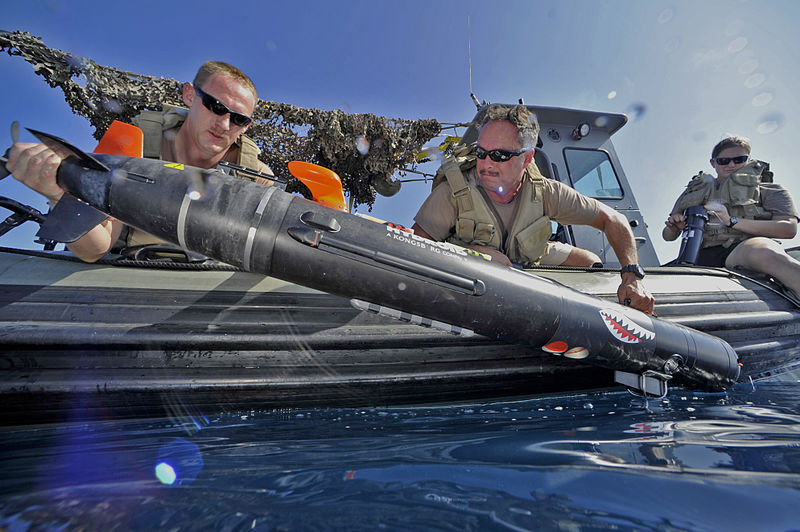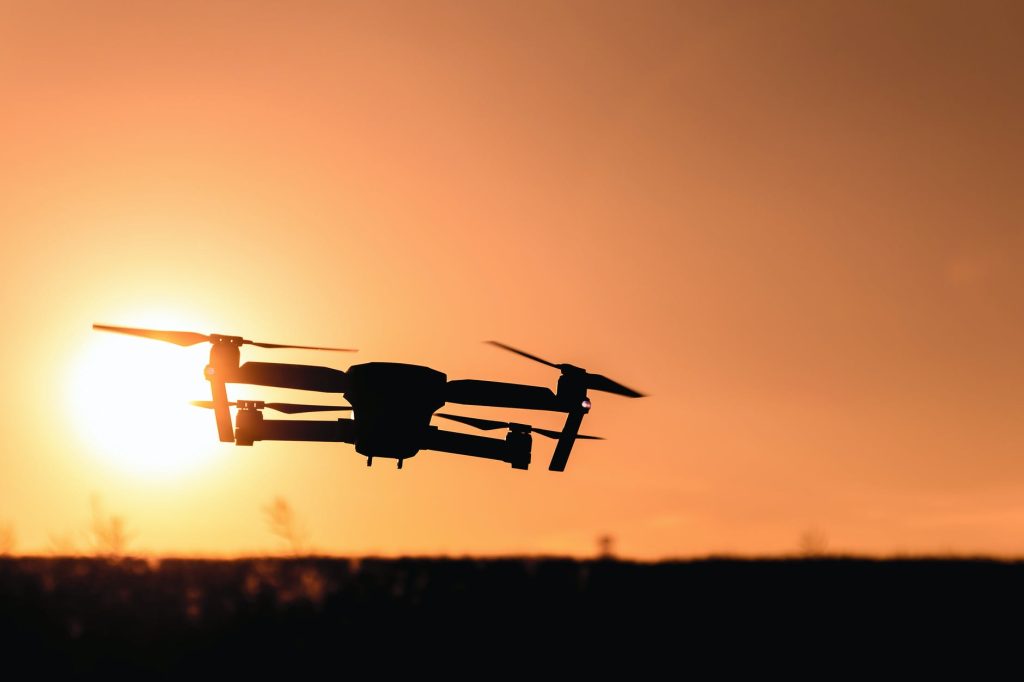by Joseph Moses - Military Strategy & Intelligence Team
Drone warfare has been one of the salient capabilities of the First World’s futuristic military arsenal through the conflicts of the 2000s and 2010s. The war that broke out in Ukraine in 2022, and the battlefields in Myanmar, Sudan and Gaza have since been the arena for another emerging technology that in tactical situations, proven to be decisive. These are the small drones ranging from the FPV variants, commercial hobby drones like the DJI drones.
This essay focuses on smaller systems and aerial systems because these grant a force cheap options and also grant significant stealth, mobility, equipment safety, and Intelligence, Surveillance and Reconnaissance (ISR) collection capabilities and provide economically cheap tactically offensive capabilities than ground-based or water based systems. Another reason to focus on small drones is their assignment to smaller troop formations which grants these systems a very versatile and efficient [semi]autonomous usage. Furthermore, the integration of Artificial Intelligence (AI), also potentially negates the necessity of connecting the drones to nodal points like bigger drones or nearby aircraft which gives them relative immunity from detection and electronic countermeasures. This essay also focuses on electronic countermeasures (jamming) and not on energy weapons and kinetic countermeasures because this uniquely counters the threat posed by drones while rendering them temporarily inert as opposed to kinetic and energy countermeasures which destroy these systems.
Turkish and Iranian drones had been at the forefront of remotely controlled vehicles for precision strikes, kamikaze strikes and monitoring purposes in the initial months of the Ukraine war, providing cheaper options for drone warfare. However, over the course of the war, smaller drones have not only emerged but have caused major disruptions in the battlefield, dispatching enemy tanks, and armored vehicles, coordinating artillery strikes, and targeting small and mobile targets like combatants and individual vehicles. Initially, they were improvised to carry and drop grenades and mortars over enemy combatants and for surveillance. In recent months, these drones have begun to trickle into the battlefield on an industrial scale, with manufactured “pylons” to attach munitions onto these small drones. Modified FPV drones are used as guided kamikaze weapons. These drones also have increased ranges to increase their surveilling and strike capabilities.
These smaller drones can by no means in the short term, replace the bigger fixed-winged drones that are conventional in militaries nor will they have the costly sensor arrays and range of conventional kamikaze drones and other loitering munitions, but they do provide stealth, loitering and precision strike capability and above all, are expendable. In addition, given their precise nature, these drones also contribute to reducing collateral damage to both life and material which is inevitable with protracted infantry engagements, artillery and air strikes.
In many ways, they fulfil the roles of snipers, forward observers, provide a good vantage point for observing and calculating firing solutions for artillery and conducting battle damage assessments, and one could argue, that the precision strikes by kamikaze drones and loitering drones are a form of Close Air Support (CAS). Another recent development as of the time of writing, is the emergence of AI being implemented in drone strikes in Ukraine to autonomously identify and strike targets. If developed, this would be a form of highly manoeuvrable and precise fire-and-forget missiles and would provide the drone launcher and operator significant situational awareness by relieving the targeting proces. It is yet to be seen at scale if autonomy is reliable across the ‘kill chain’ of target detection, discrimination, acquisition, and engagement.
While the improvised nature of the first iterations of loitering bomber drones carrying grenades and mortar shells was considered an asymmetrical and unconventional tactic, the new emerging technologies being integrated into these systems with the potential for these smaller and cheaper systems to replace conventional battlefield roles with the same quality of data collection, precision etc., could transform these systems into significant conventional and force multipliers.
Replacing conventional battlefield roles:
The Drone Swarm: The recent attack on Israel by Iranian kamikaze drones and the number of attacks on oil refineries in Russia by Ukrainian drones are isolated examples of the drone swarm. While these drones can be intercepted, there are yet to be incidents involving swarms of smaller drones used against frontline troops where interceptions are much more difficult and where these drones will have the effect of cluster munitions or rocket strikes. The chief difference would be that these munitions would be far more accurate, and manoeuvrable and can potentially loiter, change course, make quick decisions, change targets etc.
These drones are difficult to intercept because of how small silent and cheap they are. If expensive air defence systems are used to soak these swarms up, this leaves these expensive air defence systems vulnerable to counterstrikes and with a reduced magazine in their positions. If it is included in doctrine, to ignore smaller drones, this would prove to be catastrophic to frontline troops, isolated patrols, and vehicles. The American Defense Advanced Research Projects Agency (DARPA), as of 2016 has already been experimenting with integrating autonomous systems into swarm drone tactics through their OFFensive Swarm-Enabled Tactics program (OFFSET). The US Department of Defense unveiled its “Replicator” program in 2023 and has planned on fielding thousands of autonomous systems across multiple domains by 2025 to counter Chinese military build-up in the Indo-Pacific. It has been confirmed that one of the systems that is a part of this program is the Switchblade loitering munition in association with the Low Altitude Stalking and Strike Ordnance (LASSO) program. The first iteration of the Replicator program aims to tackle the problem of slowing or defeating an invading force with swarms of lethal surface drones and overhead loitering munitions. This would shift the most dangerous battlefield roles of frontline repellence and area denial from manned vehicles and posts to unmanned and semi-autonomous or autonomous swarms, creating a highly fluid, dynamic and unpredictable ‘minefield’ for an advancing enemy force.
With the battlefield potential of swarm strikes, and with the novel usage of AI in Ukraine to discriminate targets and avoid electronic warfare measures, it is only a matter of time before swarm tactics will be implemented in drone swarms of smaller UASs to react, improve and harass frontline troops and significantly attack an enemy’s tactical defensive posturing while not costing the user significantly economically and commercially. This drone could be FPV (disposable) to loitering bombing drones, to drones with attached machine guns, rockets and other anti-drone counter-measures. While these systems can be assigned at squad levels, these can also be assigned at higher levels and be used in fire missions, and joint operations across wider active theaters.

CAS and sniper/precision-strike roles: The mobility and silent nature of drones affords fighting forces in urban settings and open terrain likewise, map out, reconnoiter, stalk and even kill hiding and isolated combatants. Their manoeuvrability can be used to attack fixed encampments as we see in the conflict in Gaza between Hamas and the Israeli IDF. Similarly, we have seen videos of Israeli forces using small copter drones to enter houses and search for Hamas combatants room by room, after which they can either engage through squads or call in an artillery or air strike against the entrenched enemy. While these strikes can be expensive, we can soon expect to see these strikes being taken up by the same reconnoitring drone. This economically relieves artillery batteries, tanks or aircraft while it also frees up the squad can focus on other operations/activities.
A similar argument can be made for these systems being used in a CAS role. Given the precision, and payloads these drones can now carry and/or drop onto enemy positions and also strike and harass mobile enemies they can fulfill a very versatile CAS role while being assigned to smaller units like squads and platoons. In a swarm scenario or in a dynamic battlefield that is not shaped by shaping operations, while deconfliction could be a challenge for controlled and autonomous systems operated by smaller troop formations, this is already being performed in Ukraine against individual targets and to harass and survey larger formations. While these small drones may not be able to conduct large scale Suppression of Enemy Air Defenses (SEAD) operations, these smaller systems can be used as decoys, perform smaller precision strikes against less guarded enemy air defences, and psychologically de-motivate an infantry fighting force when used strategically.
The primary advantage of conventional CAS systems is their precision, damage dealt and psychological effect of their munitions/guns with the disadvantage of being vulnerable to enemy ground fire from small handheld systems to surface-to-air missiles. With small drone systems, the advantage primarily is a relative degree of visual and audible stealth, the expendable nature of these systems and the shock-and-awe they provide to an enemy not expecting a highly mobile and smart targeting system. These systems can also drastically reduce the time required for a CAS aircraft to get to the battlefield as these will be at the hands of the squad or platoon members.
Electronic Warfare and AI:
The primary non-energy and non-kinetic deterrence against these drones have been electronic jamming countermeasures that are used to sever the connection between the drone operator and the drone. This has led to drone confiscations and loss of battlefield information and intelligence on drones that store information offline instead of storing/recording them on the operator’s system as a redundancy measure.
With the emergence of AI being integrated into kamikaze and FPV drones, these drones do not need operator control. An improvement already being made on non-autonomous FPV systems was for the operator to target an immobile or mobile enemy and place the drone on a trajectory towards the target at maximum velocity. This tactic negates the electronic countermeasure’s effects as the severance of the connection cannot stop the momentum of the inbound kamikaze drone. Integrating AI into these smaller and faster systems is a new concept but can be seen being implemented in the Ukrainian and Russian battlefields. These drones provide the tactical advantage of identifying and discriminating targets without requiring an operator but are also beginning to prove to be immune to electronic countermeasures as they have the target and terrain information and parameters pre-loaded into them.
While the disadvantage of AI is the lack of human supervision across the entire ‘kill chain’, the real-world consequences and level of permissible and reliable autonomy are yet to be seen at scale. In the future, this would be a contentious matter, especially in a battlefield with a civilian population, in urban counter-terror and counter-insurgency operations and could cause deconfliction challenges in an active and fluid battlefield. Real-time decision-making relieves the operator while also leaving the door open for the aforementioned challenges when it comes to targeting mobile targets or operating in a highly dynamic battlefield. Active deconfliction of a changing battlefield would require a constant connection between frontline troops, the drone operator and the drone.
While the possibilities are many, it is yet to be seen how the current improvisations, augmentations to/for conventional battlefield roles with the added potential of machine autonomy, would affect the composition of smaller combat units and doctrine.
Where conventional CAS, ISR and precision strike systems and roles are expensive, require scarce expertise and are not expendable, these UAS systems are the exact opposite while also being a force multiplier. It is however yet to be seen whether they would have the same psychological effect and efficacy to either augment or replace major decisive battlefield interdiction roles.



